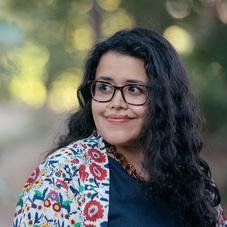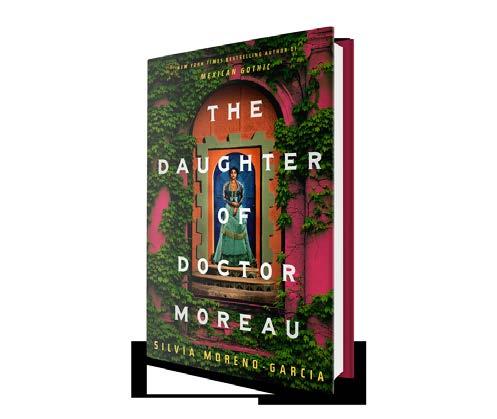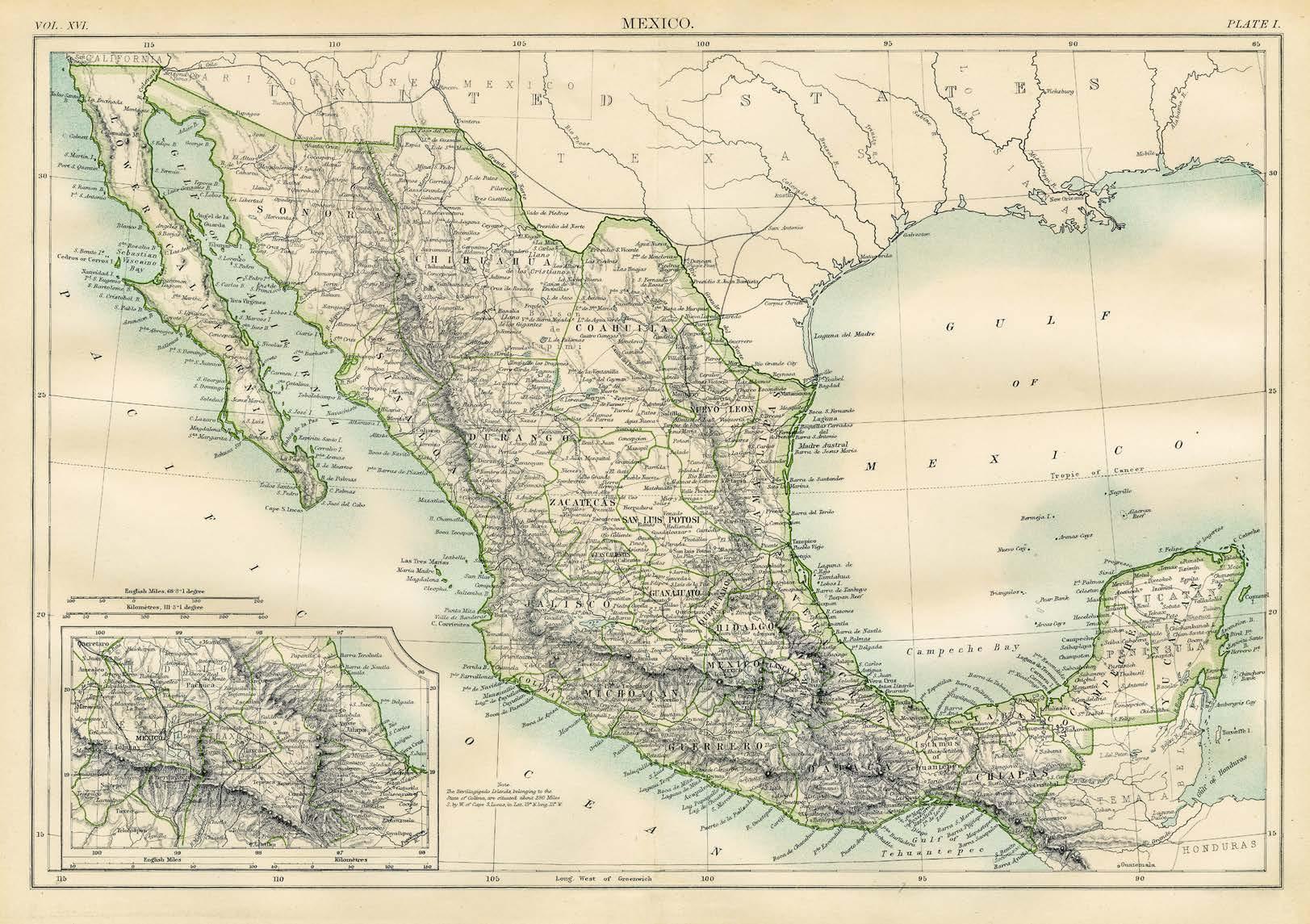








The Island of Doctor Moreau by H. G. Wells is a short novel (really, a novella) about a castaway who ends up bumping into one of the classic mad scientists of literature. Wells’s method of creating creatures involves vivisection, and the book is a firstperson narrative told in the form of what is, essentially, one long letter.
The Daughter of Doctor Moreau does not follow the same format. My novel has no vivisectionists and it creates new characters—there are no daughters in Wells’s tale. Nor does it keep the setting of the original: if you look at a map of Mexico, you’ll see the Yucatán is a peninsula, not an island.
What then, does my book have in common with Wells’s?
There is a similar setup of a reclusive scientist conducting questionable experiments in the 19 th century and also an interest in religion, science, power, and morality. Add to that my own recurring concerns about colonialism, class, and womanhood, and you get TheDaughterofDoctorMoreau.

The result is a story that is neither a prequel nor a sequel, nor does it aim to become a pastiche. It’s also not one single genre, but then, in the time of Wells, science fiction as a category didn’t exist—Wells wrote “scientific romances.”
I think my novel is very much in conversation with Wells, which is ultimately the function of literature. It is a time machine that allows us to reach into the past and clutch another person’s hand.
silviamoreno-garcia.com • @silviamg • @silviamg.author1. What did you think about Carlota? Who was your favorite character and why?
2. Carlota has grown up in isolation on her father’s estate. How do you think this has shaped who she is and the choices that she makes?
3. How did you feel about the relationship between Carlota and Eduardo? Between Carlota and Montgomery?
4. What did you think about Carlota’s relationship with the hybrids? How does her attitude towards them differ from her father’s? From Lizalde’s? How do you think you would react to the hybrids?
5. What is your reaction to Dr. Moreau’s experiments? Do you think there are any circumstances under which genetic experimentation is ethical? Why or why not?
6. In the author’s note, Moreno-Garcia talks about the historical context that inspired the story. How does the author use science fiction tropes to discuss subjects such as worker exploitation and the Indigenous experience?
7. What did you enjoy most about the book? What did you like least? What changes, if any, would you make to the story?
8. What are your thoughts on the ending? Do you think Carlota and the hybrids reunite, and what do you imagine happens if they do?
9. Were you familiar with the story of The Island of Doctor Moreau before you read this book? If so, what did you think about this reimagining? Why do you think particular stories are rebooted or retold so often?
10. If you were to interview the author, what questions would you ask?
An alcoholic beverage, it literally means fierywater.
A public square or park.
A spirit from Yucatec folklore that dwells in the jungle. They can cause mischief if not treated properly.
A type of tin-glazed ceramic tile popular in Spain and Portugal and imported into the Americas during colonial times.
A horse-drawn buggy.
The foremen at a hacienda.
The castes. A system of racial classification.
A plant, an infusion made from its leaves was used to treat rheumatism. Also chalche.
Medication used to treat gout.
Smooth, flat cookware.
The independent, rebel Maya state that emerged in the mid-19 th century in Yucatan, centered around the town of Chan Santa Cruz. Also applied to the followers of the religion that developed in this area, centered around the Holy Cross.
Foreigners. The name that the Maya inhabitants of Yucatan gave to European or mixed people in the area.
An aromatic herb used in cooking, known by several other names, including Jesuit’s Tea.
Literally translates to rape. In the 19 th century it figuratively referred to the seduction and taking of the virginity of an “honest” woman. It was a punishable offense.
A flowering plant associated with life, fertility, and female sexuality.
A tree that has bark and roots with toxic compounds, known as the fishpoisontree. Also ha’abin.
Owner of a hacienda
A large estate used for farming or raising cattle.
A type of fiber plant used to make twine and ropes.
Medicinal herb. Also ix kantunbub.
Medium-sized wild cat with a slender build.
K’AN KAAB : Yellow earth. Also k’an kab.
Red earth. Also kankab-kat.
Literally translates to commoner. Its rhetorical usage indicates a person of Maya descent.
The top administrator at a hacienda.
METATES Stone for grinding corn.
MUJUL Dowry. Also muhul.
Large account or large debt. System designed to keep Maya workers tied to a hacienda by making it impossible for them to repay their financial obligations.
A water wheel or water pump, typically operated by a mule.
Palm leaves often used for the roofs of dwellings.
Tree with red trunk and thorny branches that was abundant in the south of the state of Campeche.
A tree, used as herbal medicine.
PORTÓN Gate. POSTIGO Wicket gate or pedestrian gate.
Ceremonies thanking God or to ensure good crops.
Ritual drink. Also saka’.
Store owned by the hacendado where workers bought goods on credit.
TRAPICHE Sugar mill.
Sideboard. TUTE
A card game.
Stony land that is bad for sowing. Also tzekel.
A writing desk.

1. Carlota is named after an empress who visited Yucatán. Who is this empress?
2. What was Montgomery’s trade in Cuba?
Where is Moreau originally from?
4. Moreau calls two of his creations Livia and Cesare. But which names do they commonly use?
What was the name of Montgomery’s wife?
How many years pass between Part 1 and 2?
What is the color of Carlota’s eyes?
There are two forms of debt mentioned in the novel. What are they?
9. The Lizaldes talk about importing hacienda workers from which part of the world?
10. Moreau doesn’t have a first name in H. G. Wells’s story. What is his name in TheDaughterofDoctorMoreau?
There are a couple of lines that in the novel that are essentially verbatim from Wells’s original novel. In TheDaughterofDoctor
Moreau, Moreau says,
“The human shape I can achieve, almost with ease, but there is trouble with the hands and the claws, and there are painful gaps . . . but that must not concern you.”
Wells writes:
“The human shape I can get now, almost with ease, so that it is lithe and graceful, or thick and strong; but often there is trouble with the hands and the claws—painful things, that I dare not shape too freely.”
Can you find another line that appears in both The Island of Doctor Moreau and TheDaughterofDoctorMoreau?
Montgomery doesn’t have a last name in Wells’s original novel. He’s called Montgomery Laughton in this version. Who do you think he’s named after?
In Wells’s novel, he says Moreau created a dangerous snakelike Thing unlike his other animals, which he had to kill. Does the Thing show up in my novel?
1. Marie Charlotte Amélie Augustine Victoire Clémentine Léopoldine, or Charlotte of Belgium, also known as Carlota of Mexico.
2. He maintained various type of machines.
3. France, probably Paris.
4. Lupe and Cachito. Although Moreau has Latin names for all his creations, Ramona calls them something else or they call themselves by a different name.
5. Fanny Owen. There is a novel called “Fanny Owen” by Agustina Bessa-Luís which in turn was adapted into the movie Francisca. The novel and the movie focus on a tragic love triangle between the eponymous Francisca “Fanny” Owen, the daughter of a British officer; the Portuguese writer Camilo Castelo Branco; and his friend José Augusto Pinto de Magalhães.
6. Six years.
7. Honey.
8. The little debt and the big debt. The little debt was when indentured workers bought products at the tienda de raya, the store of a hacienda. The large debt was incurred when they married or a burial was held. Both kept them in bondage to the hacienda owners.
9. China. They also mention Italian workers. Although Hacendados brought over workers from several parts of the world, including Korea, they continued to rely on local Indigenous laborers.
10. Gustave. And yes, there is a painter named Gustave Moreau. View his painting ŒedipusetleSphinx and see if you find something in TheDaughterofDoctorMoreau that references this image.
1. Wells wrote:
“There is still something in everything I do that defeats me, makes me dissatisfied, challenges me to further effort. Sometimes I rise above my level, sometimes I fall below it; but always I fall short of the things I dream.”
That phrasing is echoed in Moreno-Garcia’s novel when Moreau says, “There is still something in everything I do that defeats me. I fall constantly short of the things I dream. Limbs are crooked, deformities spring up, errors mar my work. Once have I come close to perfection, and well . . . it’s not a success I’ve been able to replicate.”
2. Charles Laughton, who played Doctor Moreau in The Island of Lost Souls (1932). The film also features Bela Lugosi, who had become a star the previous year with the adaptation of Dracula.
3. The creature at the end of Part 1 is an analogue to the Thing. Wells describes it as: “It was purely an experiment. It was a limbless thing, with a horrible face, that writhed along the ground in a serpentine fashion. It was immensely strong, and in infuriating pain. It lurked in the woods for some days, until we hunted it; and then it wriggled into the northern part of the island, and we divided the party to close in upon it. Montgomery insisted upon coming with me.
The man had a rifle; and when his body was found, one of the barrels was curved into the shape of an S and very nearly bitten through. Montgomery shot the thing. After that I stuck to the ideal of humanity—except for little things.”
The Daughter of Doctor Moreau is loosely inspired by the novel The Island of Doctor Moreau by H. G. Wells. That story tells the story of a shipwrecked man who discovers an island inhabited by strange creatures that have been operated on as part of Dr. Moreau’s vivisection experiments. Vivisection was a controversial practice in the late nineteenth cen tury, and Moreau seeks to discover the “extreme limit of plasticity in a living shape” by literally changing animals into men.
The Daughter of Doctor Moreau takes place in Mexico, against the backdrop of a real conflict. Because of its location and the difficulty of main taining contact with the rest of Mexico, Yucatán, although a peninsula, sometimes felt like an island. Some old Spanish maps indeed showed it as such, hence the original spark for this novel.
The Caste War of Yucatán began in 1847 and lasted for more than five decades. The native Maya peo ple of the peninsula rose against the Mexican, European-descended, and mixed populations.
The reasons for the conflict were complex and rooted in long-simmering animosities. Landowners expanded their haciendas, seeking to raise cattle or cultivate sugar. The Maya people were the prin cipal source of labor, and landowners employed an abusive system of debt and punishment to keep
them in check. Taxes were also a point of contention, as well as the violence and discrimination heaped upon the Maya.
Conflicts and interactions in the Yucatán Peninsula did not involve just Mexican and Maya communi ties. There were Black people in Mexico who tended to occupy a higher social position than the Maya, and served what Matthew Restall calls an “inter stitial position.” There were also some Chinese and Korean laborers, especially toward the end of the nineteenth century. Hacendados also tried hiring Italians, who grew ill and died. There were mixedrace people in a dizzying array of combinations. Pardos, mulattoes, and mestizos were some of the terms used to describe them, borrowed from racial classifications of colonial Spain. And there were the British.
The British had established themselves in what is present-day Belize, and formed what was then called British Honduras. The British traded with the Maya, and in 1850 they recognized a free Maya state (Chan Santa Cruz), as a move to both under mine Mexico’s claim in the region and to benefit from the natural resources in the area.
Relations between the British and the Maya were complex because the Maya rebels did not neces sarily represent a unified faction. In 1849, rebel
leader José Venancio Pec murdered another important leader, Jacinto Pat, accusing him of using the armed struggled for his own enrichment. Another leader, Cecilio Chí, was killed by one of his followers. As the years advanced, Maya rebels clustered in the east, while hacendados in the western portion of the peninsula switched from sugar plantations to the cultivation of henequen, a type of fiber and a very profitable crop. A henequen boom began in 1880 and lasted until the beginning of the Mexican Revolution, around 1910. The treatment of the Maya did not improve during those years. The system of debt and peonage continued.
In 1893, the British government signed a new treaty with the Mexican government, recognizing its con trol of all of the Yucatán. They ceased in their sup port of Chan Santa Cruz and the Maya rebels.
The Island of Doctor Moreau was originally pub lished in 1896. Five years later, the Mexican army had occupied Chan Santa Cruz.
“Carlota looked around the antechamber, flipping through the many books and journals stacked on the shelves. Her father’s sketches of wild animals were plentiful. There was a drawing showing the head of a dead rabbit from above. The skull had been removed and the position of the nerves neatly indicated. A drawing of a dog revealed its spinal cord. Jaguars appeared in her father’s sketches often. Sometimes they did not seem like scientific studies, but more artistic pursuits.”
From TheDaughterofDoctorMoreau by Silvia Moreno-Garcia ARTWORK BY IRVIN RODRIGUEZ IRVINRODRIGUEZ.COM IG: @IRVINRODRIGUEZ